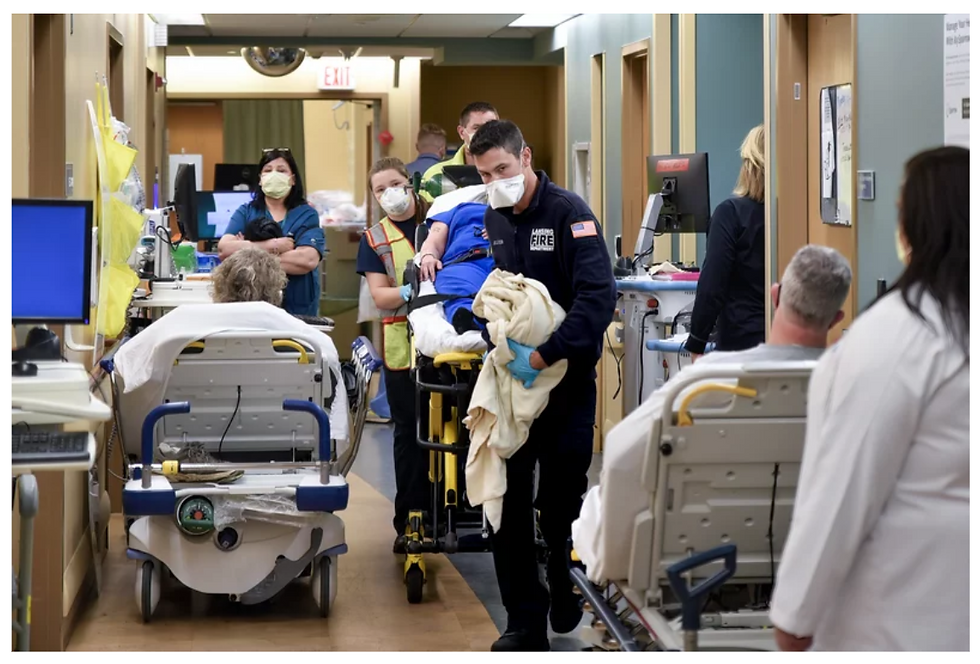Spotlight: Karen Kennedy-Evans On Discovery of Kennedy Ulcer
- katherinepiette
- Jan 25, 2017
- 3 min read
Updated: Mar 30, 2021

Corstrata’s Vice President of Clinical Quality, Jan Cuzzell, MSN, RN, CWS, had the privilege to talk with long-time friend and colleague, Karen Kennedy-Evans, RN, FNP, APRN-BC, about her discovery of the Kennedy Terminal Ulcer.
Karen Lou Kennedy-Evans is highly respected in the wound care industry. She is the President of KL Kennedy, LLC, which provides skin and wound care consultation for long-term care, home health, industry, and private practices. She is also a certified Family Nurse Practitioner, Physician Assistant, Geriatric Nurse, Geriatric Nurse Practitioner, and Registered Nurse experienced in clinical research, quality control and infection control. She currently serves as Secretary of the Board of Directors of the National Pressure Ulcer Advisory Panel (APUAP) and as adjunct faculty for the University of Arizona, School of Nursing.
Ms. Kennedy-Evans conducts seminars and classes aimed at assisting healthcare professionals nationally and internationally in the provision of quality assessment, wound, and skin care of the geriatric patient. She is also the author, co-author, and contributing author of more than 40 books, publications, and articles in the fields of wound care, geriatric skin care, and incontinence. She is a graduate of the Indiana University School of Medicine and School of Nursing and the Saint Joseph’s Hospital School of Nursing in Fort Wayne, Indiana.
Could you describe the circumstances that led to you to discover the pattern of skin changes that became known as the Kennedy Terminal Ulcer?
"In 1983, I worked at a 500-bed LTC facility in Fort Wayne, Indiana. I had been working there about five years when I realized that pressure ulcers were a problem that no one knew very much about. No one had a good handle on what pressure ulcers were, how many there were, or what to do with them. During this time, I attended my first pressure ulcer conference to try and learn more about the problem.
After that conference, I started what was probably the first skin care team in the United States. Those were the days before we had computers and when nurses only wore gloves to insert a rectal suppository. I asked the floor nurses if we could work together as a team to try to determine the incidence of pressure ulcers in the facility. I didn’t want them to feel as if someone was checking up on them or that they weren’t doing their job. I began by making weekly rounds on every floor with the head nurse, pharmacist, DON, dietician and nurses aides. We checked and took pictures of every pressure ulcer and recorded the clinical characteristics. What does the wound look like? Is it better or worse? What are the measurements? Is the patient receiving adequate nutrition? Are they on the correct support surface? Are they being turned?...and so on. I had a spreadsheet that one of the secretaries had put together for me to record the data we collected.
Highlighter pens had just come out on the market, and I used different colors to mark the spreadsheet. I would highlight the patient’s name in different colors depending on their status: newly acquired, worsening, resolved or deceased. We started to notice that some patients developed pressure ulcers that didn’t make sense to us. These were pressure ulcers involving the sacrum that had similar characteristics: They involved a large surface area, had irregular borders, were multicolored, and superficial. Feedback from the staff was also consistent - “Karen, this wasn’t here the other day!”
As we collected more data, I began to see a pattern in ulcer appearance and time to death. Over time we actually observed two different presentations: bilateral involving both buttocks and shaped like a pear or butterfly, or unilateral involving only one buttock. On average, patients who developed these unusual ulcers with a sudden onset died within a couple of weeks. The medical director of our facility started calling these wounds “Kennedy Terminal” ulcers. Based on five years of collected data, I was encouraged to submit an abstract to the first NPUAP conference so I could present my observations.
Interestingly, Dr. Jeffrey Levine found a connection between similar patterns of ulceration described by Dr. Charcot in 1877"
For more information on Kennedy-Evans' discovery, visit the Kennedy Terminal Ulcer website, and don't forget to check out our free infographic on the present and future of chronic wound care.





Comments